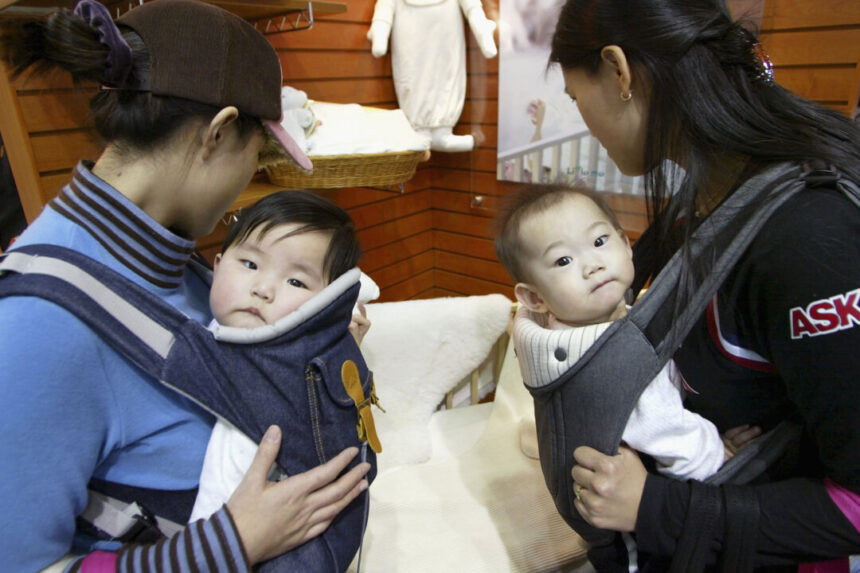South Korean President Yoon Suk Yeol recently announced a demographic national emergency, pledging to implement significant policy changes to address the country’s extremely low birth rate.
“The most fundamental and critical issue is the demographic crisis caused by the ultra-low birth rates.” Mr. Yoon
stated on June 19, during a Presidential Committee on Aging Society and Population Policy meeting in Gyeonggi Province.
South Korea
reported a total fertility rate of 0.72 last year, marking a new low since 1983. The country’s total fertility rate has dropped below the necessary 2.1 to sustain its population of 51 million, according to KOSIS, the national statistics portal of the Korean Statistical Agency.
Mr. Yoon pledged to introduce a range of measures to increase the fertility rate, focusing on three main areas: work-family balance, childcare, and housing.
Proposed actions include expanding parental leave benefits, extending paternity leave, flexible work schedules, increased tax credits, and reducing the educational burden on parents, as outlined in a government policy
press release.
Additionally, the government plans to offer low-interest loans to newlyweds for home purchases and rental assistance with additional favorable interest rates for each child born.
The press release outlines the creation of a new government ministry to implement the proposed policies and budget to address the demographic crisis.
Since the onset of COVID-19 in 2020, the number of deaths has surpassed the number of births, leading to a natural decline in the total population for the fourth consecutive year.
With the declining birth rate, the aging population presents a significant challenge.
In 2023, the total number of seniors aged 70 and above exceeded the total number of young adults aged 20 to 29 for the first time,
according to a survey by South Korea’s Ministry of Administration and Security.
As South Korea’s population continues to age, there is a growing demand to raise the age criteria for the elderly. The City of Seoul has advocated for increasing the age threshold for various elderly welfare benefits from 65 to 70 years and above.
According to a
report released by the City of Seoul on June 17, by 2026, the proportion of individuals aged 65 in Seoul will exceed 20 percent of the city’s total population, potentially leading to the city becoming an ultra-age metropolis.
The percentage of employed individuals aged 70 in South Korea is also increasing. Data from KOSIS
indicated that as of January this year, 24.5 percent of the population aged 70 and above are still part of the workforce.
The data further reveals that the percentage of the total population aged 70 and above who are still employed has risen to 5.6 percent,
up from 5.1 percent in January 2023.




